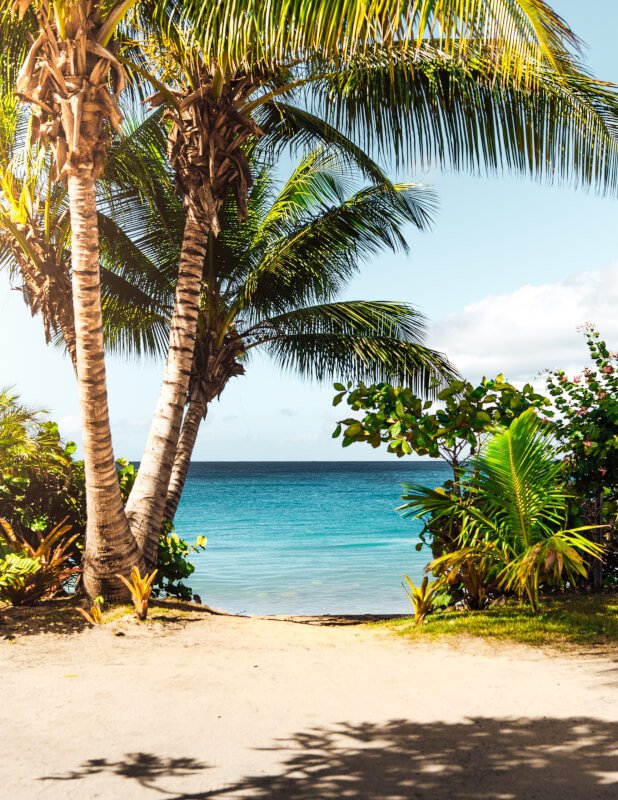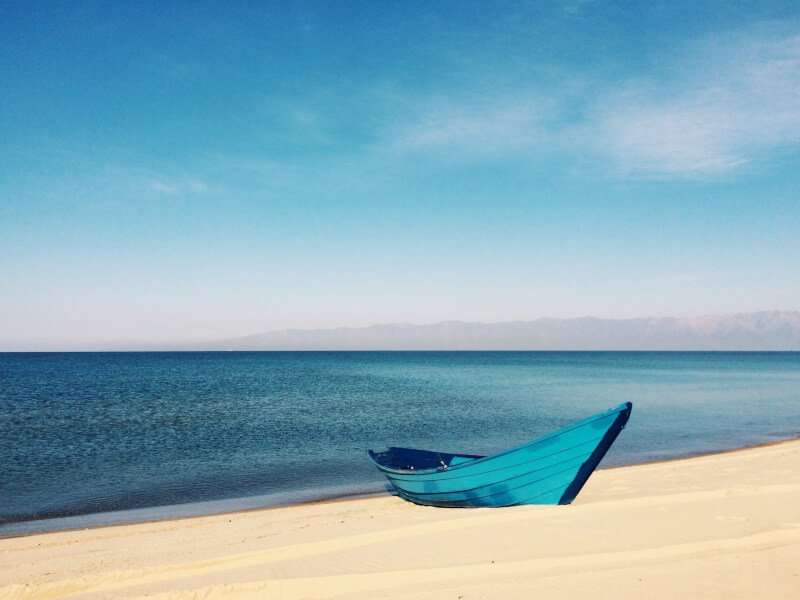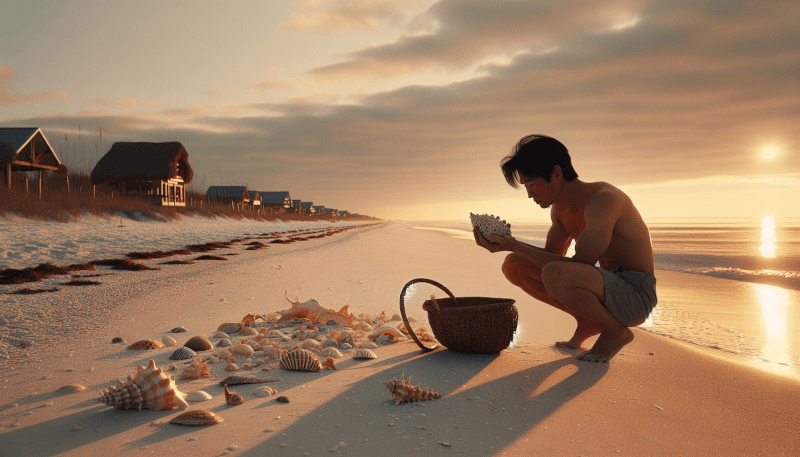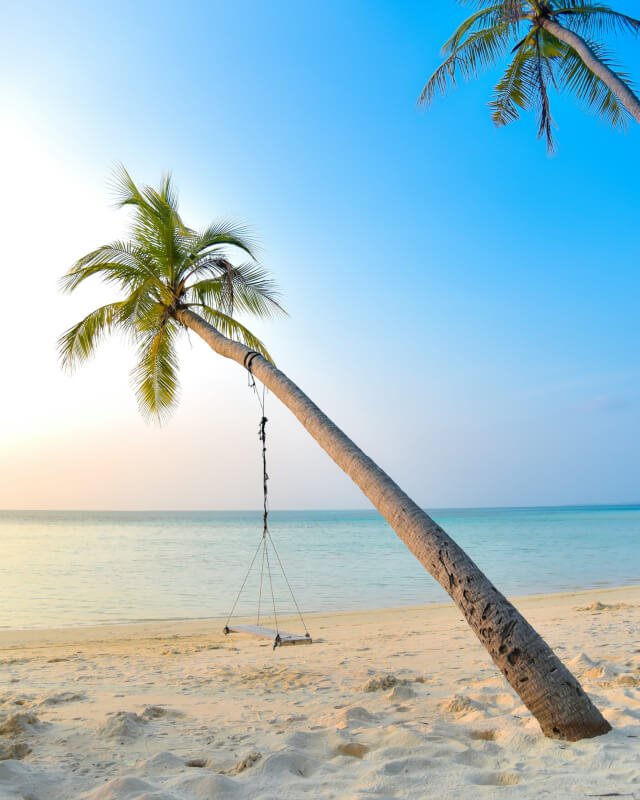If you’re a nature enthusiast and love the thrill of finding treasures along the shore, then Florida is the perfect destination for you. With its vast coastline and abundance of seashells, this sunny state offers endless opportunities for shelling adventures. But with so many beaches to choose from, how do you ensure you’re selecting the right one? In this article, we’ll guide you through the process of choosing the perfect beach for shelling in Florida, from considering tides and currents to identifying the best locations for different types of shells. So grab your bucket and get ready to uncover the secrets of Florida’s shell-laden shores!

Things to Consider
Location
When choosing a beach for shelling in Florida, the location is an important factor to consider. Florida offers a wide range of beautiful beaches along its extensive coastline, so it’s important to choose one that is accessible and convenient for you. Consider the proximity to your accommodations and whether the beach is easily reachable by car or public transportation.
Accessibility
The accessibility of a shelling beach is another crucial consideration. Look for beaches that have parking facilities nearby, preferably with easy access to the beach itself. If you have mobility issues or are traveling with young children, it’s essential to choose a beach that offers ramps or walkways to make it easier to navigate the sandy terrain.
Crowd Level
Depending on your preferences, you may want to consider the crowd level on the beach. Some people enjoy a bustling atmosphere with lots of activity and social interaction, while others prefer a more secluded and peaceful experience. Consider the time of year you plan to visit, as some beaches may be more crowded during peak tourist seasons.
Natural Preservation
If you are passionate about environmental conservation, you may want to choose a shelling beach that prioritizes natural preservation. Look for beaches that have a commitment to protecting the local ecosystem and marine life. These beaches often have regulations in place to ensure that shelling is done responsibly and without causing harm to the environment.
Tide and Weather Conditions
The tide and weather conditions at a shelling beach can greatly affect the quality and quantity of shells you are likely to find. Check the tide charts to determine the best time to go shelling, as low tide often reveals a larger variety of shells. Additionally, pay attention to weather conditions, as stormy weather can make shelling unsafe and may lead to limited findings.
Top Shelling Beaches in Florida
Sanibel Island
Sanibel Island is widely regarded as one of the best shelling destinations in Florida. Its unique east-west orientation acts as a natural scoop, causing shells to wash ashore in large numbers. The beach is known for its wide variety of seashells, including the prized junonia shell. With its picturesque setting and abundance of shells, Sanibel Island is a must-visit for any avid sheller.
Captiva Island
Located just north of Sanibel Island, Captiva Island also offers fantastic shelling opportunities. The beach on Captiva Island is known for its beautiful sunsets and has a reputation for golden treasures, such as the highly sought-after lion’s paw shell. The beach is relatively uncrowded, making it an ideal spot to enjoy a serene shelling experience.
Marco Island
Situated on the southwestern coast, Marco Island is a popular destination for shelling enthusiasts. The island’s pristine white sand beaches are home to a diverse range of shells, including conch shells, sand dollars, and lightning whelks. The warm waters and picturesque surroundings further enhance the shelling experience on Marco Island.
Cayo Costa State Park
For those seeking a more secluded shelling adventure, Cayo Costa State Park is a hidden gem. Accessible only by boat, this uninhabited island offers miles of untouched beaches teeming with shells. From alphabet cones to colorful cockle shells, you’re bound to find unique treasures as you explore the pristine shoreline. A visit to Cayo Costa State Park is a true escape into nature.
Blind Pass Beach
Located between Sanibel and Captiva Islands, Blind Pass Beach is known for its strong currents and shifting sands, which create the perfect conditions for shell deposition. Shelling at Blind Pass Beach offers a chance to find a wide variety of shells, including tulip shells, olive shells, and whelks. With its convenient location and exceptional shelling opportunities, Blind Pass Beach is a popular choice among shell collectors.
Beach Characteristics to Look For
Sandy and Shallow Waters
When searching for the perfect shelling beach, it’s important to look for sandy beaches with shallow waters. Sandy bottoms are more likely to hold shells, while rocky or muddy areas may limit your findings. Shallow waters make it easier to walk along the shoreline and scan for shells without venturing too far into the ocean.
Secluded Areas
If you prefer a peaceful shelling experience away from the crowds, consider looking for secluded areas. These beaches are often less frequented, allowing you to enjoy the sounds of the waves and the thrill of finding shells without distractions. Secluded beaches also provide the opportunity to discover shells that have not been picked over by other beachgoers.
Diverse Shell Variety
A great shelling beach should offer a diverse variety of shells. Look for beaches that are known for their assortment of shells, as this increases your chances of finding rare and unique specimens. Shells can vary depending on the location and ocean currents, so researching the types of shells commonly found in a particular area can help guide your beach selection.
Non-Protected Beaches
It’s important to note that collecting live shells, such as those with living creatures inside, is often prohibited on protected beaches. To ensure a guilt-free and legal shelling experience, choose beaches that do not have strict regulations on shell collecting. Non-protected beaches often allow the collection of empty shells while promoting responsible shelling practices.
Research and Preparation
Consulting Local Experts
Before embarking on your shelling adventure, consider consulting local experts who are knowledgeable about the beaches in the area. Local residents, park rangers, or shelling enthusiasts can provide valuable insights and recommendations. They can offer advice on the best beaches to visit based on current conditions and recent shell sightings.
Online Research and Forums
The internet is a valuable resource for researching shelling beaches in Florida. Online forums and websites dedicated to shelling provide a wealth of information from experienced shellers. Take the time to read reviews and firsthand accounts of beach experiences to gain insight into the best locations for shelling.
Shelling Guidebooks
Investing in a shelling guidebook specific to the region you plan to visit can greatly enhance your shelling experience. These guidebooks offer detailed information on the best shelling beaches, tips for finding specific shells, and insights into the local ecosystem. They often include maps, photographs, and descriptions of shells to help you identify your finds.
Understanding Local Regulations
Before heading out to a shelling beach, familiarize yourself with any local regulations or rules governing shell collecting. Some beaches may have restrictions on collecting live shells or have specific guidelines to ensure the preservation of marine life. Knowing and respecting these regulations will help preserve the natural beauty of the beach and ensure a sustainable shelling experience.

Best Time to Go Shelling
Low Tide
One of the most important factors to consider when planning a shelling trip is the tide. Shells are more likely to be exposed and washed onto the shore during low tide. Research the tide charts for your chosen beach and plan your shelling excursion accordingly. Low tide periods offer the best opportunity to find a plethora of shells.
Morning or Late Afternoon
The early morning or late afternoon hours are usually the best times to go shelling. During these times, the beach is less crowded, and the lighting conditions are optimal for spotting shells along the shoreline. Moreover, many shell collectors believe that the best shells are washed ashore during the early morning hours when they have had time to settle overnight.
Avoiding Crowded Seasons
To maximize your chances of finding shells and enjoy a more peaceful experience, it’s advisable to avoid crowded seasons. Tourist peaks, such as school vacations and holidays, can attract large crowds to popular beaches, making it more challenging to find shells undisturbed. Consider visiting during the quieter shoulder seasons for a truly immersive shelling adventure.
Checking Moon Phases
Believe it or not, moon phases can play a role in successful shelling trips. Some shellers claim that the best shelling occurs during the days leading up to and following a full or new moon. This is because the gravitational pull of the moon affects tides, potentially exposing more shells. While not scientifically proven, it’s certainly worth considering when planning your shelling excursion.
Tips for Successful Shelling
Bring Necessary Equipment
To ensure a successful and enjoyable shelling experience, it’s important to come prepared with the right equipment. Bring a mesh bag or bucket to collect shells, as well as a shelling scoop or small shovel to dig for buried treasures. Additionally, wearing a hat, sunglasses, and comfortable walking shoes will protect you from the sun and make your beachcombing adventures more comfortable.
Look in the Wrack Line
The wrack line, also known as the strandline, is the line of debris that accumulates at the high tide mark. Shells often get deposited in this line, making it a prime spot for shelling. Take your time to carefully scan the wrack line, as some shells may blend in with seaweed or other debris.
Search in Piles and Mounds
When searching for shells, pay attention to piles and mounds of shells that have been washed ashore. These accumulations often contain a higher concentration of shells, increasing your chances of finding unique specimens. Carefully sift through the piles and mounds, taking care to return any live shells to the ocean.
Observe Wave Action
Observing the wave action can provide insights into the best areas to find shells. Shells are often brought ashore by the waves and deposited in certain locations. Keep an eye out for areas with rougher waves or spots where the waves break, as these areas tend to accumulate more shells. Be cautious and stay safe while exploring close to the water’s edge.
Practice Responsible Shelling
Responsible shelling involves collecting shells without causing harm to the natural environment or marine life. Avoid disturbing live shells, as they play a vital role in the ecosystem. Only collect empty shells and be mindful of any regulations regarding shell collection. By practicing responsible shelling, you can help preserve the beauty of the beach for future generations.

Safety Precautions
Wearing Proper Footwear
Protecting your feet while shelling is important to avoid injuries and discomfort. Wear waterproof sandals or sturdy shoes with non-slip soles to navigate rocky or shell-covered terrain. Sharp shells and hidden debris can be hazardous, so choosing appropriate footwear is essential.
Applying Sunscreen
Florida’s sunny climate makes sunscreen a must-have for any outdoor activity, including shelling. Apply a waterproof sunscreen with a high SPF to protect your skin from harmful UV rays. Remember to reapply regularly, especially if you spend extended periods on the beach.
Beware of Wildlife
While exploring the shoreline, be aware of the diverse wildlife that may inhabit the beach. Some beaches in Florida are home to marine creatures like horseshoe crabs, jellyfish, and even sharks. Take caution and observe these creatures from a safe distance to avoid any potential encounters or harm.
Avoid Shelling in Stormy Weather
During stormy weather, shelling can be dangerous and unpredictable. Riptides, strong currents, and lightning are significant hazards to be aware of. Keep an eye on the weather forecast and avoid shelling if storms are expected. It’s better to prioritize safety and postpone your shelling trip for another day.
Environmental Conservation
Leave No Trace
When visiting a shelling beach, it’s important to leave no trace behind. Pack out any trash or debris and dispose of it properly. Minimize your impact on the environment by avoiding unnecessary disturbances to the beach, dunes, or vegetation. By leaving the beach as pristine as you found it, you contribute to the preservation of its natural beauty.
Take Only Empty Shells
While it may be tempting to collect every shell you come across, consider taking only empty shells with you. Empty shells provide homes and protection for various marine organisms, and removing them can disrupt the delicate ecosystem. By leaving live shells undisturbed, you promote the conservation of marine life and the sustainability of the shelling experience.
Observe Marine Life from a Distance
While exploring the shoreline, you may encounter fascinating marine creatures. Respect their habitat by observing them from a distance and refraining from touching or disturbing them. Interacting with marine life can cause stress or harm, so keep a respectful distance to ensure their well-being and the preservation of their natural behaviors.

Enjoying the Experience
Relaxing on the Beach
Shelling in Florida is not just about the thrill of finding shells – it’s also an opportunity to relax and enjoy the beauty of the beach. Take time to soak in the sunshine, feel the sand between your toes, and listen to the soothing sound of the waves. Shelling is a tranquil and meditative activity, allowing you to connect with nature and find inner peace.
Making it a Family Activity
Shelling is a wonderful activity to share with family members of all ages. Engage your children in the excitement of searching for shells and teach them about the beauty of the natural world. Take the opportunity to bond with loved ones as you explore the beach together, creating lasting memories and fostering a love for nature.
Joining Shelling Tours or Events
For a truly immersive shelling experience, consider joining shelling tours or events led by local experts. These guided experiences provide valuable insights into the best shelling locations, unique shells, and the local ecosystem. You’ll have the opportunity to learn from knowledgeable guides and connect with fellow shell enthusiasts, elevating your shelling adventure to a whole new level.
Bonus Tips
Exploring Less Popular Beaches
While popular beaches attract crowds, don’t overlook the less popular beaches for shelling. These hidden gems may not have as many amenities or facilities, but they often offer a more untouched and authentic shelling experience. Exploring lesser-known beaches can lead to the discovery of unspoiled shorelines and a greater chance of finding rare shells.
Venturing to Remote Islands
For the adventurous sheller, venturing to remote islands can yield unparalleled shelling experiences. These islands are often less visited and have a higher likelihood of yielding untouched treasures. Consider exploring islands accessible only by boat or by taking a ferry to discover hidden paradises abundant in shells.
Learning About Local History and Wildlife
Enhance your shelling experience by learning about the local history and wildlife of the area. Florida’s coastlines are rich with cultural and natural heritage, and understanding the stories behind the beaches can deepen your appreciation for the environment. Visit local museums, historical sites, or nature centers to gain a deeper understanding of the region’s unique ecosystem and its inhabitants.
As you embark on your shelling adventure in Florida, consider these tips and insights to make the most of your experience. Remember to respect the environment, practice responsible shelling, and enjoy the tranquility of the beach as you discover nature’s treasures. Happy shelling!



